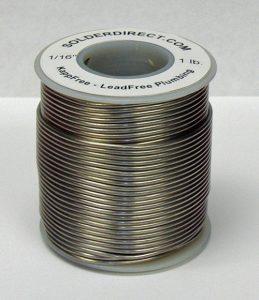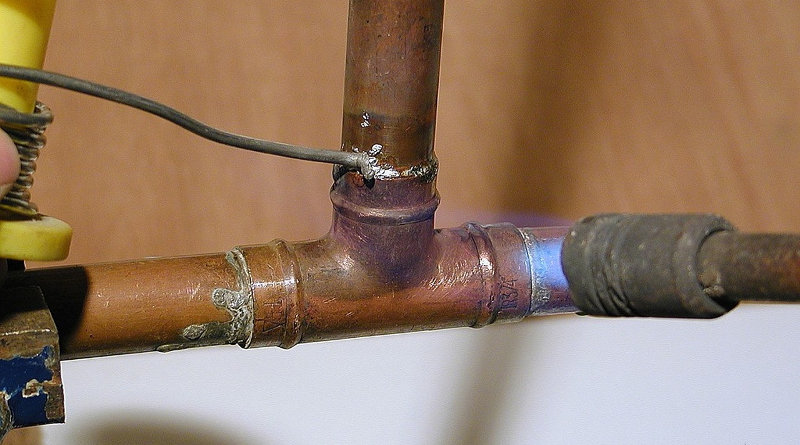If you have the right tools and equipment, soldering capillary joints in plumbing and heating systems can be a fairly easy and straightforward task.
The real skill is in ensuring that the solder that connects the pipe and the joint is evenly distributed, and therefore creates a complete seal. The capillary action that occurs within the pipe joint helps with this, but it is still important to make sure you heat and distribute the solder in all parts of the joint if you want to avoid leaks.
Before we take a look at how to solder a joint, you should make sure that you understand the different types of capillary joint, and the different ways they are used.
What is a Capillary Joint?
Capillary joints are used to join sections of copper pipe in plumbing and heating systems. Unlike a compression joint, which uses the force exerted on a small ring of copper by tightening a nut to seal the connection, capillary joints rely on a seal of molten and then cooled solder.
The solder is inserted into the joint (either during manufacturing, or by the person installing the pipe), heated, and then allowed to cool, hopefully creating a perfect seal.
There are two basic types of soldered capillary joint, an End Feed Joint and an Integral Ring Fitting (sometimes known as a Yorkshire Joint):
In the End Feed Joint, solder is heated and applied to the end of the joint when the copper pipe is in place, and capillary action feeds it into the tiny gap between the two fittings.
With an Integral Ring Fitting, the solder is already contained in a reservoir (ring) inside the joint fitting. The copper pipe is pushed into the joint, the outside is heated and the pre-fitted solder ring melts and fills the gap.
Soldering Capillary Joints
Before you begin soldering capillary joints, you should make sure that you have everything ready and close at hand. Carefully measure the length of copper pipe, making sure you take into account the extra needed to fit inside the joint. When cutting, hold the pipe firmly and cut the end square with a fine-toothed hacksaw or a pipe cutter.
Preparing the Pipe and Joint
Clean the inside and outside of the pipe where it has been cut with a round file to remove any burrs. Some pipe cutters have a blade for removing burrs, but a fine file will do the job just as well. Then further clean the end of the pipe with wire wool.
Wipe the end of the pipe with a clean cloth. Copper pipe needs to be completely clean for the solder to take properly, so you need to brush the end with Flux (a chemical cleaner) to remove any grease.
Coat both the ends of the pipe and fittings with the flux. Now push the end of the pipe into the fitting until it stops. If possible, rotate the pipe in the fitting (or rotate the fitting on the pipe) to ensure that the flux is evenly spread.
Soldering the Joint

Lead-free Solder Wire
Note: Before applying any heat to the joint or pipe, make sure that you have moved anything flammable away. You should also protect any surfaces directly behind the pipe. An old ceramic tile is perfect for this.
If using an Integral Ring joint, move the flame of your blowtorch evenly around the joint fitting until a ring of solder appears at the end of the fitting.
You need to make sure that you don’t overheat the pipe or the fitting. Too much heat can cause the metal to begin to oxidise and the solder to fail.
Keep the flame moving around the joint. As the solder will follow the heat around the joint as it turns molten.
When working with an End Feed joint, heat the flux until it bubbles and then touch the end of the solder wire to the end of the fitting where it meets the pipe. Repeat this at three or four places around the joint.
It should seem as if the solder is sucked into the tiny gap between the pipe and joint fitting. Once a complete ring of solder can be seen around the edge of the fitting, the joint should be sealed.
When using either of these methods, always let the solder harden for a few minutes before touching or moving the pipe or joint fitting.
Compression fittings are easier to use, but soldering capillary joints correctly will always give you a stronger and more reliable end result.







